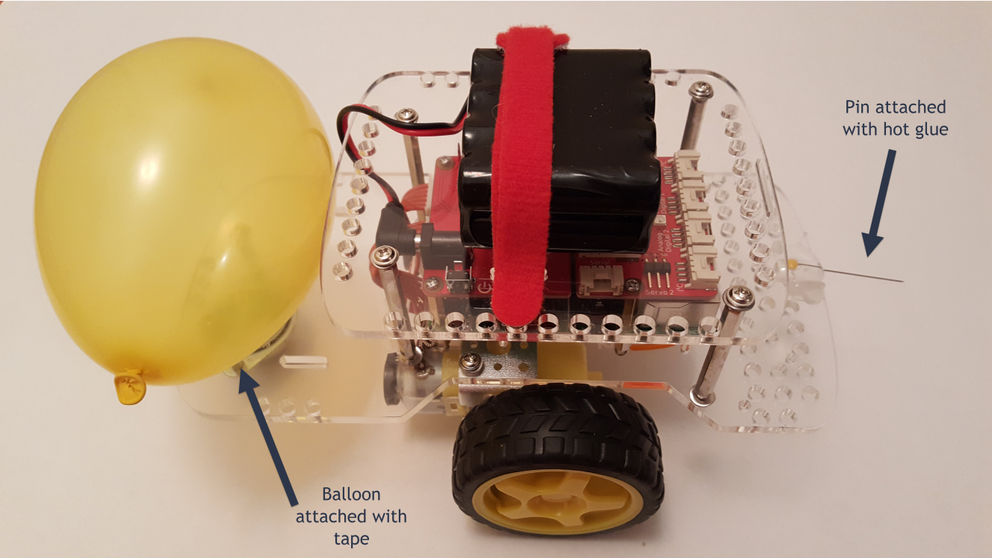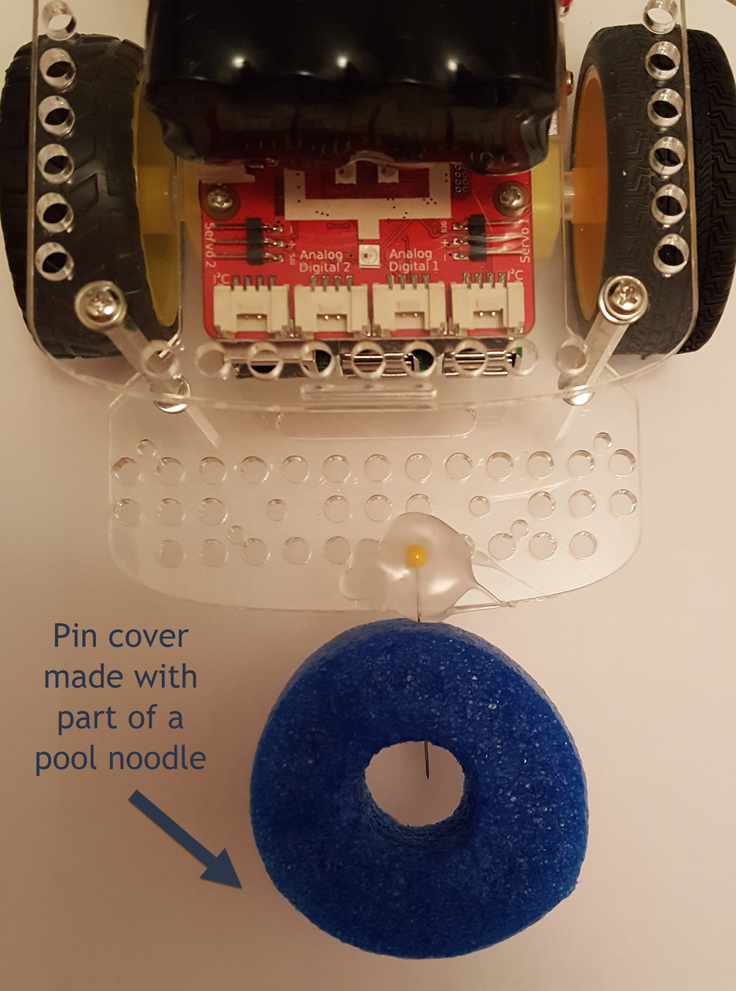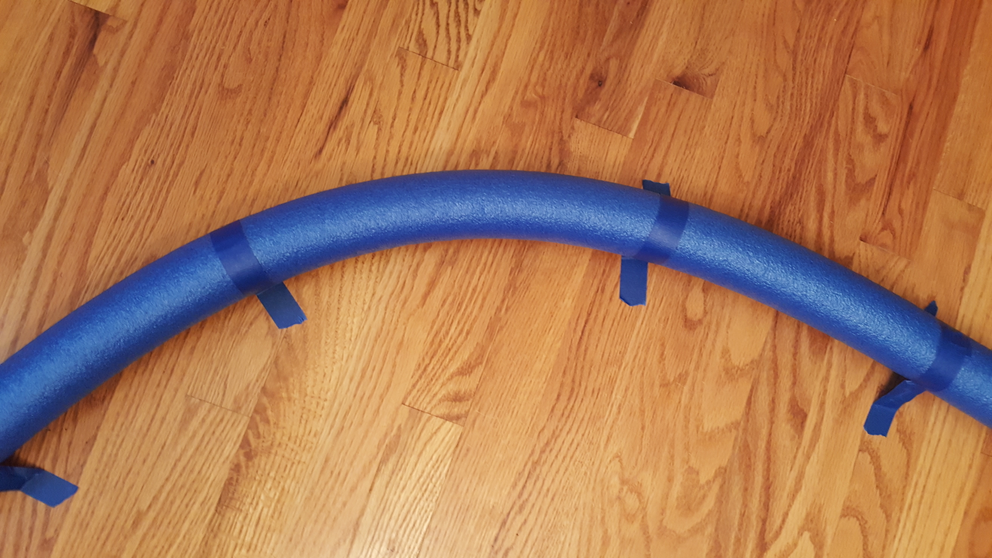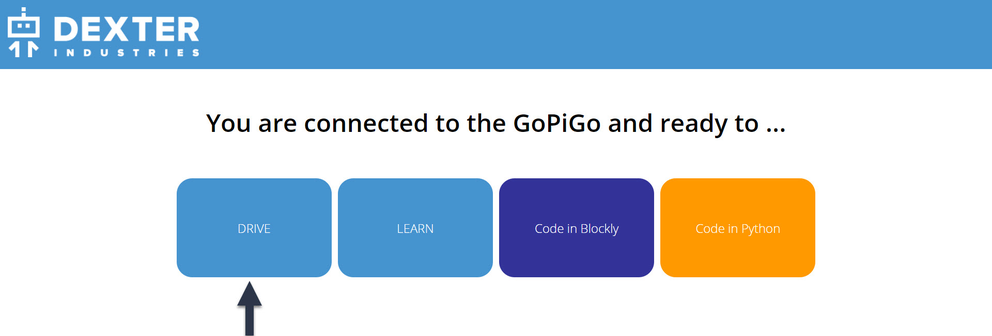Battlebots
Students will work in teams to design a battlebot to compete against other robots. Students will become familiar with controlling the GoPiGo.
Setup
Robots
- Move the battery pack to the top of the GoPiGo and attach it with the Velcro strap.
- Attach a pin to the front of each of the robots using hot glue or tape. Cover the end of the pin so that no one accidentally pricks themselves. One way to cover the pin is to cut slices off of one of the pool noodles to use as covers.
- Inflate the balloons and tape one on the back of each robot where the battery pack was located.


Arena
- Create an arena for the robots to battle. Since the robots will have pins on them, a space to delineate the play area from the students. The size of the arena will vary based on the number of robots and available space.
- One quick and inexpensive way to create an arena is to use pool noodles and tape. *NOTE: Be careful using tape on the floor because it may leave a residue. Test on a small area first.*

Teams
Decide the size of student teams. Organize teams by giving each team member a role so that everyone is included. Provide a system to help rotate roles so that all students are given the opportunity to drive the GoPiGo robot during a battle.
Create Game Rules
Type of Battle
Determine the type of battle(s)
- One v. one
- Teams
- Everyone at once
- Bracket
Additional Defensive and Offensive Systems
Determine what types of additional defensive and offensive systems are allowed.
- Can the balloon be covered at all?
- Can you add extra pins?
- What can you do to protect your balloon and robot?
- Can you create a system to right your robot if it is flipped?
- How long can you stay along the border of the arena?
- Can you wait to move or must you drive away from the edge of the arena at the beginning so that your balloon is unprotected?
- When can you modify your robot's defensive and offensive systems? Is there a time limit for construction/repairs?


Elimination and Winner
Determine what eliminates a robot and how you win.
- Is the only eliminating factor when the balloon is popped?
- Are you eliminated if your robot is flipped over?
- Can you right your robot if it is flipped over?
- Do you win if your robot is the last one with a balloon that is still able to drive around?
Battle Length
Determine the length of each battle.
- How long is each battle going to last?
- Will they be timed or does the length of the battle depend on how long it takes for there to be a single winner?
- What happens if there is a stalemate?
Review safety procedures with the students.
- The cover on the pin should only be removed when the robot is in the arena and the battle is about to begin. Covers should be put back on the pins between battles and any time the robot is outside of the arena.
- No one go into the arena during the battle or while the robots have pins exposed.
Students will connect to their GoPiGo robot and use the Drive feature to control their robot during the battle based upon the agreed rules.


Challenge students to program their GoPiGo robot to battle instead of manually controlling it using the Drive feature.
- Should you use a loop?
- What types of maneuvers would be most beneficial defensively? Offensively?
- How long should your program run?
- What sensor(s) could be beneficial? How would you incorporate the use of a sensor into the battle?
- How could a servo be utilized?